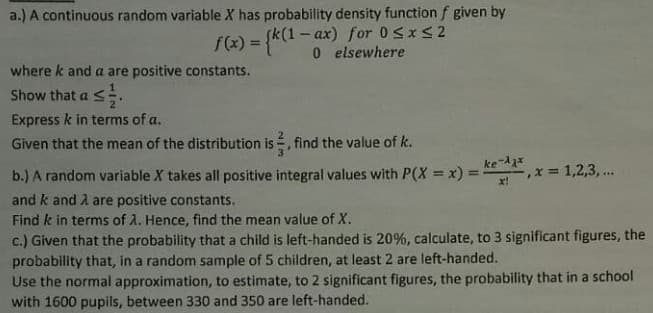a.) A continuous random variable X has probability density function f given by sk(1 - ax) for 0SxS2 0 elsewhere f(x) = %3D where k and a are positive constants. Show that a <. Express k in terms of a. Given that the mean of the distribution is find the value of k. ke-Ar dek D cy r- 123
Permutations and Combinations
If there are 5 dishes, they can be relished in any order at a time. In permutation, it should be in a particular order. In combination, the order does not matter. Take 3 letters a, b, and c. The possible ways of pairing any two letters are ab, bc, ac, ba, cb and ca. It is in a particular order. So, this can be called the permutation of a, b, and c. But if the order does not matter then ab is the same as ba. Similarly, bc is the same as cb and ac is the same as ca. Here the list has ab, bc, and ac alone. This can be called the combination of a, b, and c.
Counting Theory
The fundamental counting principle is a rule that is used to count the total number of possible outcomes in a given situation.
Show all working explaining detailly each step
Answer should be typewritten using a computer keyboard!

Trending now
This is a popular solution!
Step by step
Solved in 3 steps




